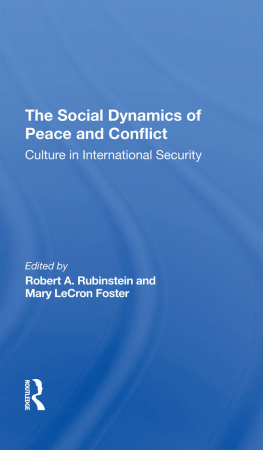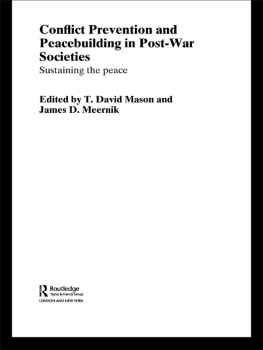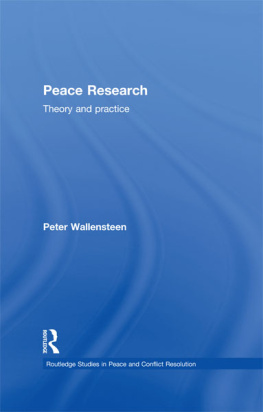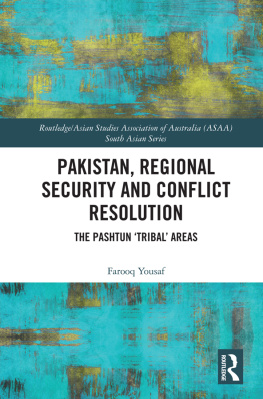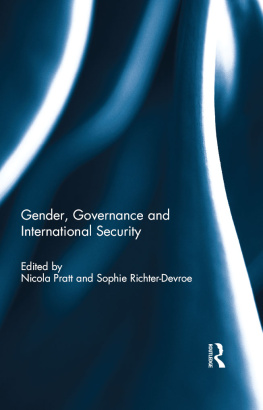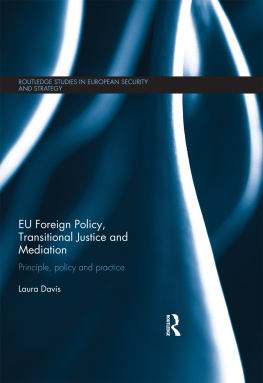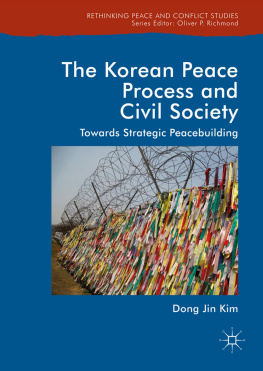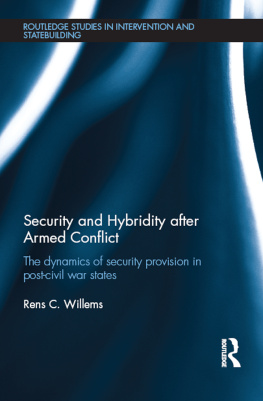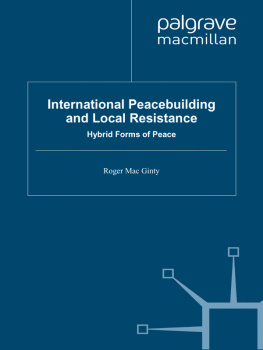First published 1988 by Westview Press, Inc.
Published 2019 by Routeldge
52 Vanderbilt Avenue, New York, NY 10017
2 Park Square, Milton Park, Abingdon, Oxon OX14 4RN
Routledge is an imprint of the Taylor & Francis Group, an informa business
Copyright 1988 Taylor & Francis
All rights reserved. No part of this book may be reprinted or reproduced or utilised in any form or by any electronic, mechanical, or other means, now known or hereafter invented, including photocopying and recording, or in any information storage or retrieval system, without permission in writing from the publishers.
Notice:
Product or corporate names may be trademarks or registered trademarks, and are used only for identification and explanation without intent to infringe.
Library of Congress Cataloging-in-Publication Data
The Social dynamics of peace and conflict: culture in international security/[edited] by Robert A. Rubinstein and Mary LeCron Foster.
p. cm.
Includes bibliographies.
Includes index.
ISBN 0-8133-7614-9
1. International relations and culture. 2. Security, International. I. Rubinstein, Robert A. II. Foster, Mary LeCron, 1914
JX1255.S62 1988
327.1'1dc19
88-17594
CIP
ISBN 13: 978-0-367-29581-3 (hbk)
The main aim of this volume is to show the importance for international security studies of better understanding the social dynamics of peace and conflict. Our intention is to illustrate the crucial role that culture and symbols play in facilitating peace or fostering conflict. Our initial work on this project dates from 1985. We had earlier organized a series of symposia on peace and war in anthropological perspective for the 11th International Congress of Anthropological and Ethnological Sciences. We intended those symposia, and the book which derived from them ( Peace and War: Cross-Cultural Perspectives, 1986), to encourage anthropologists to bring their data and theory to bear on contemporary issues of war, peace, and international security.
We thought, at the time, that the lack of anthropological presence in these areas resulted from anthropologists concerning themselves mainly with specialized questions of anthropological theory and from their presenting their research reports in journals which served mainly professional anthropologists. We thought foreign policy and international security professionals would see the value of anthropological data and embrace them, if only we and our colleagues would make our work accessible to them.
In fact, since 1983 anthropologists have been working more seriously than ever on questions of peace and war. And we were enormously encouraged by Institutionalized initiatives in international security undertaken by such organizations as the MacArthur Foundation, the Social Science Research Council, and the American Association for the Advancement of Scienceintended to revitalize the field of international security analysis. We were especially pleased that the announcements for these initiatives intimated a broader role for anthropological analyses.
As we and many of our anthropological colleagues began to make efforts to participate in these initiatives, we frequently saw, or heard reports from others, that despite appearances to the contrary the representatives of the international security and foreign policy communities who dominated in these initiatives did not appreciate anthropological work. At best they characterized it as interesting but hopelessly "unscientific" and thus inadequate and unimportant for the "real world" of "hardball politics" and of rapid technological development. Especially disturbing were reports that studies of the normative and symbolic aspects of culture seemed to be particularly perplexing to these international security professionals.
We soon realized that the international security analysis community had developed an orthodoxy which accepted as valid and useful only data that derived from a select set of research methods and that they expected these data to be presented in standard formats and formal models. A supposed "scientific objectivity" was the hallmark of this analysis. Moreover, the world-view of this community could be succinctly stated (and had been in several canonical texts) in a way that anthropology's contribution could not.
We first began to redress this imbalance by organizing a symposium on "Power, Change, and Security Decisions: Anthropological Perspectives" for the 1985 annual meeting of the American Association for the Advancement of Science. That symposium was sponsored by Section H (Anthropology) of the AAAS and by the AAAS Committee on Science, Arms Control, and National Security. Several of the papers in this book (Bateson, Goldschmidt, Potter, and Worsley) were first prepared for that symposium. The American Association for the Advancement of Science gave us a small grant to cover the travel expenses of one Soviet and one British participant in that symposium. The addition of their cross-cultural perspectives enriched our discussions, and we are grateful to the AAAS for that help.
Shortly after the symposium we agreed that it would be useful to publish a volume of papers which emphasized the value of looking at the social dynamics of peace and conflict. We began to look for other papers which fit this theme. We were fortunate that at the 1986 annual meeting of the Kroeber Anthropological Society at the University of California at Berkeley a symposium was held in honor of our late colleague Professor David Mandelbaum. Several of the papers from that symposium (Anderson, Brasset, Habarad, and Sluka) seemed to us to fit especially well with the papers from the AAAS session, and these are included here.
We felt especially keenly the lack of a paper about the Fourth World. We therefore asked Alice Kehoe to write one especially for this volume. We invited Linda Pulliam's paper on the Navy community, initially presented at the 1986 meeting of the Southwestern Anthropological Association, because it provided a unique, personalized, methodological, and descriptive perspective on issues with which this book is concerned.
During the time that we worked on this book Rubinstein held a small grant from the Ploughshares Fund which supported in part his work on his paper in, and his editing of, this volume. It is a pleasure to acknowledge that support here.
We hope that the empirical analyses and theoretical materials in this volume will serve to open a continuing dialogue between anthropologists and members of the international security community. We hope, too, that this book will lead others of our colleagues to join in making the sensitive analysis of cultural materials a regular and continuing part of international security discussions. For, in our view, it is only by revitalizing the scope of those discussions that we can hope to achieve lasting peace.

